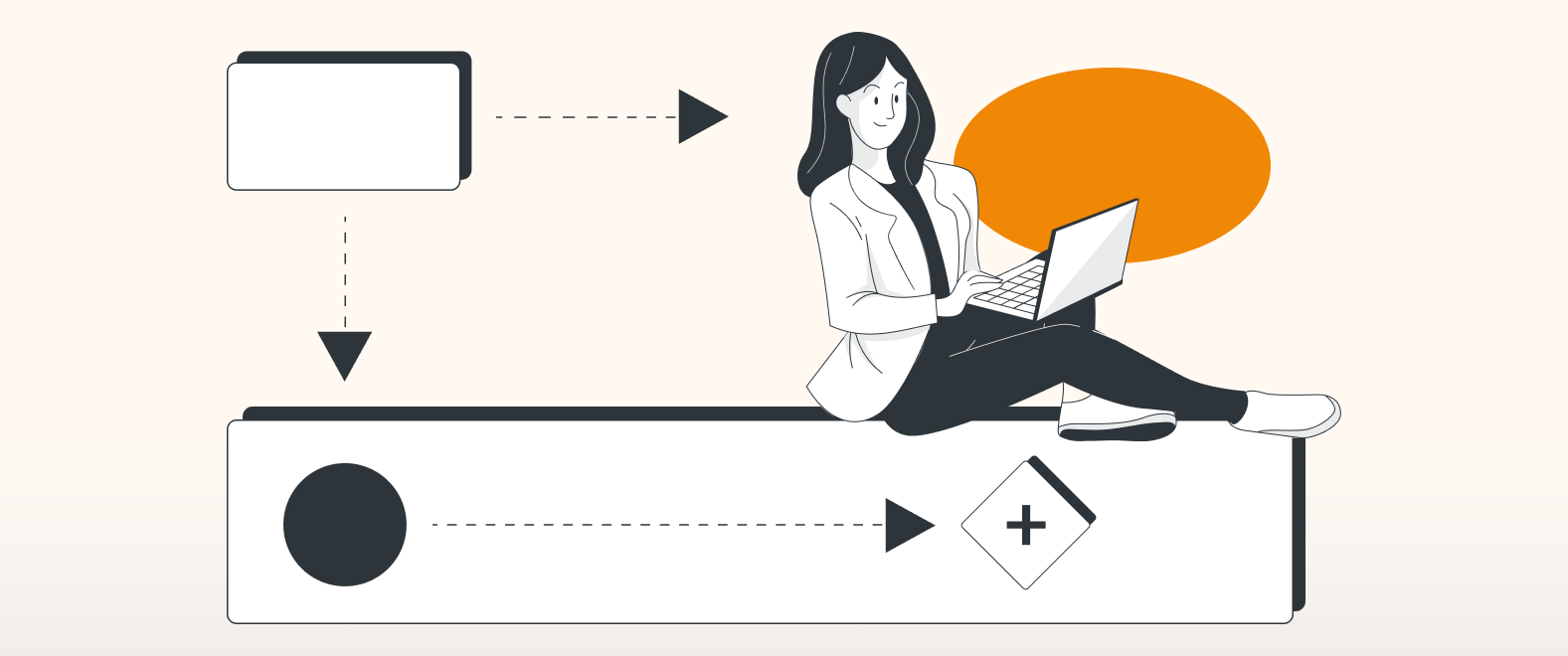OK, first things first: What’s BPMN?
Put briefly, Business Process Model and Notation (BPMN) provides a graphical notation for specifying business processes. It’s a standard for visualizing business process modeling that’s based on a flowcharting technique similar to activity diagrams from Unified Modeling Language (UML).
A BPMN diagram can look like anything from this:

To this:
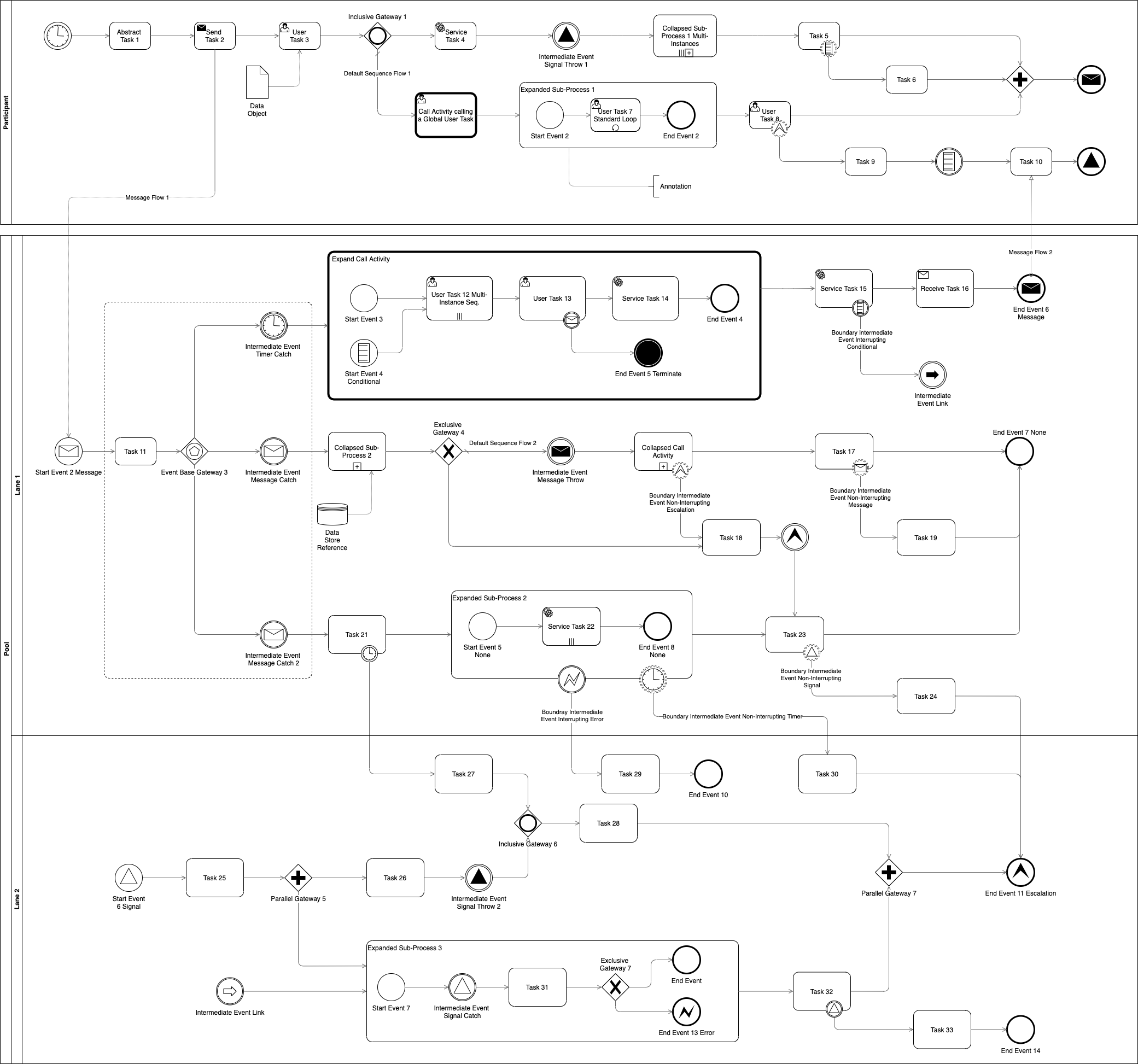
Complex, am I right? BPMN diagrams can get that way rather quickly; that’s part of their power. But don’t worry, we’ll start in the shallower end of the pool today to show you how draw.io can make creating any BPMN diagram (including the complex ones) much less intimidating – and even enjoyable!
Everything you need
As you can gather from that second image, there are a huge variety of shapes and connectors that can come into play as you create your BPMN diagrams. The more complex your model becomes, the more you’ll have to add shapes to your modeling arsenal.
The good news is that draw.io comes complete with all of the shapes and connectors you’ll ever need. You’ll find them in the left-hand column next to the draw.io canvas:

For our example, however, we’ll stick to just a few of the more basic shapes:
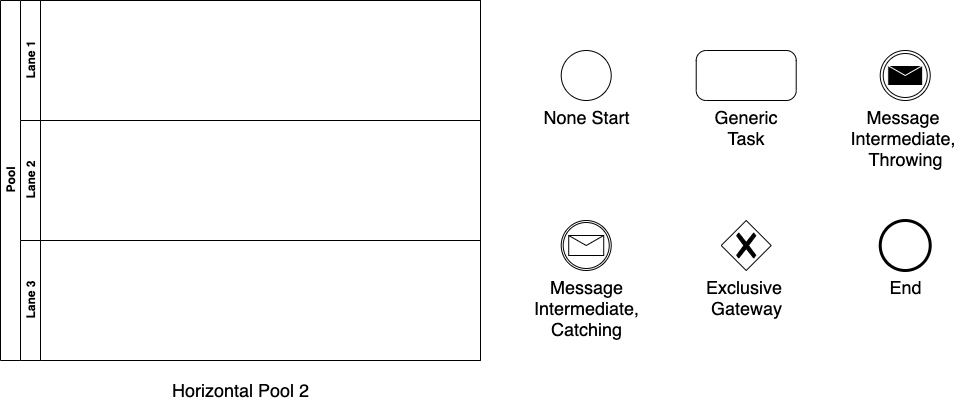
And we’ll explain them each as we create our diagram.
The water’s fine
Speaking of starting at the shallow end, the first thing you’ll want to do when starting your diagram is to create a “pool.” You’ll find it in the third row under BPMN General above. Right next to that pool is the “swimlane.” In BPMN, the pool is the universe of your process, while each swimlane placed within the pool represents an individual “actor.” Our example is the process of hiring a new employee, and our BPMN pool looks like this:
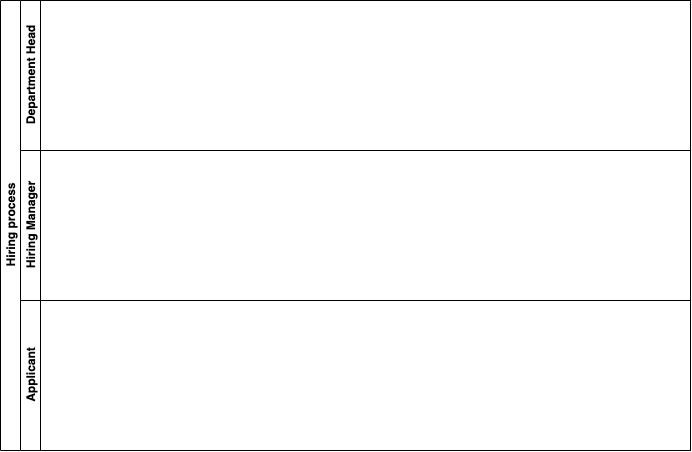
Now it’s just a matter of starting at the left, working your way to the right, and mapping out your process. This is the fun part!
The starting gun
Take a look at those basic shapes above. The General Start circle does just that: it kicks the entire process into motion. Let’s take a look at how our process begins (and to be clear, we’ve greatly simplified the process for demonstration purposes. This is a job search in a universe containing only one applicant.):

The department head has a need. A new position needs to be filled. The process is started, and that leads to the first task: informing the hiring manager. A message is sent, and it’s received in the next swimlane by the hiring manager.
Lanes two and three make their move

That received message leads the process to a crossroads. The exclusive gateway there in the middle means that only one of multiple things can happen. In this case, our hiring manager can either approve or deny the request. If denied, a message is thrown to and caught by the department head, and the process comes to an end.
If the request is approved, the hiring manager advertises the job, and the applicant reads about it, leading to another crossroads. If the applicant is not interested, their job search continues, but the hiring process for this position ends. If the applicant is interested, their next task is to apply for the job, and a message is thrown to and caught by the hiring manager.
Lane two moves ahead
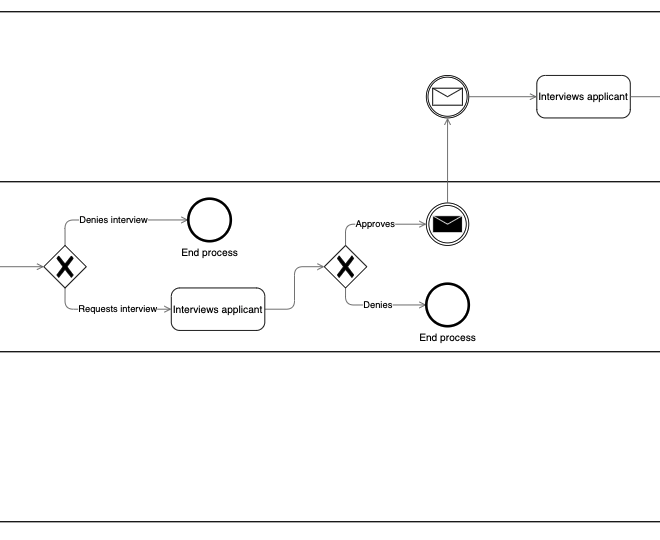
Now we’re back in the hiring manager’s lane. Another pair of crossroads with a task in between. First, deny an interview and end the process or request and perform an interview with the applicant.
Post-interview, the hiring manager can either deny the applicant and end the process or approve and throw another message into the waiting hands of the department head, who takes the lead with a second interview.
The final stretch
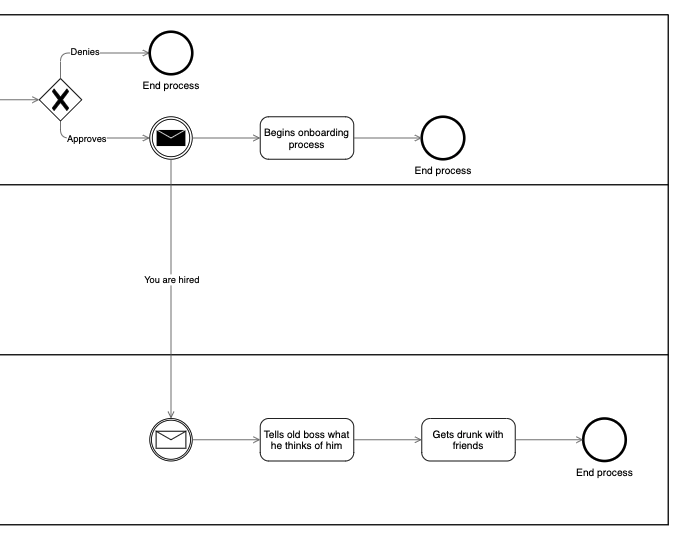
…and you can see how it all ends. Victory for everyone involved! The position is filled, the applicant is happy, and the hiring manager takes a day off for a round of golf as the process comes to its ultimate endpoint.
Let’s go to the video
So, those are the basics in a nutshell, but BPMN is a robust system that can embrace a limitless range of processes, from the simplest to the most complex. We’ll offer another post soon that tells you more about the full range of shapes available. In the meantime, here’s a video to show you just how effortless draw.io makes it to use all of those shapes to diagram all of the processes that define your business:
You are currently viewing a placeholder content from Youtube. To access the actual content, click the button below. Please note that doing so will share data with third-party providers.
More InformationVisit our YouTube Channel, or book a free demo to learn more about the limitless ways in which draw.io can make life easier and more productive for you and everyone in (and outside) your company!
Last Updated on October 20, 2022 by Admin

